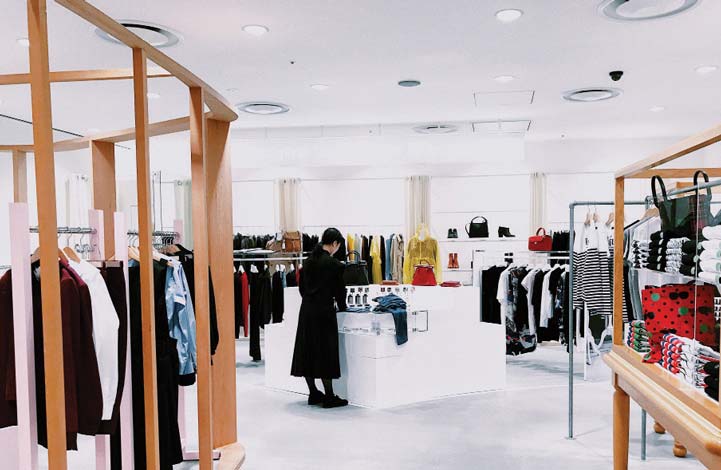Greater investment into assets by landlords in order to mitigate potential challenges, in order to maintain values, will be key
The ultimate outcome from these evolving trends will be a softening in overall demand for traditional retail space, restricting future rental growth and in some cases placing downward pressure on rents. To counter this landlords will need to increase the level of investment into their assets, in order to maintain values rather than to solely enhance returns.
Prime retail destinations in urban locations with strong footfall are likely to be less exposed as are strong convenience led locations with strong catchment fundamentals. However, they will not be totally immune. For secondary and tertiary retail destinations in more peripheral locations the outlook is likely to be more challenging.
So what can landlords/investors do to mitigate these challenges and even capitalise on this shift?

Growing appeal of luxury
Luxury retail has been one of the most insulated to the growth in online to date. However, e-commerce will play an ever more important role in driving sales and improving engagement with customers. Current forecasts from Bain & Company suggest that 25% of luxury spend will be online by 2025, more than double the current share of 10%.
Despite online accounting for a larger share of spend occupational demand for key luxury destinations will remain robust. This is down to the fact that luxury brand store portfolios in Europe are relatively constrained compared to mass market brands. Likewise, the target premier luxury area for expanding brands remains limited being largely confined to a given street or pitch. With an increasing number of luxury brands looking to develop and expand their own stand alone boutiques in order to better engage with customers, the demand/supply imbalance is likely to remain in the landlords favour.
This divergence in performance is already being reflected in pricing in some markets. For example, prime high street yields in Paris held in Q219 whereas shopping centre yields softened by 25bps. Similarly, Düsseldorf has seen prime high street yields harden 25bps since the end of 2018 while shopping centre yields have held.
Less retail destination, more destination
For retail destinations, particularly shopping centres and retail parks, a greater focus on experience and intensification of uses that attracts more people could be key.
This may include introducing more innovative leisure concepts that generate additional footfall, such as eSports arenas and VR experiences. Intensifying land use and/or repurposing excess retail space, where viable, for other uses including residential, offices, co-working, urban logistics, hotels, medical, student housing and community uses, will also bring additional people on site to support and rejuvenate the existing retail.
Enhancing the public realm experience
The space between retail is often overlooked but can play an important role in enhancing the attractiveness of a place. Beyond the traditional aesthetic concerns, events and gamification of the public realm through visitor apps, may offer opportunities to bring in new types of consumers and in turn occupiers helping to generate additional footfall.
Mix it up with independents
In some cases there can be very little to differentiate destinations in terms of their retail offer due to the dominance of listed and international brands. These types of occupiers will continue to be a key draw for consumers, however with some of these legacy retailers now rationalising store portfolios there may be an opportunity to fill the void with good quality local independents that offer a point of difference.
The premise of space as a service is already being embraced in the office sector with the rise of co-working providers like WeWork. The question is, should retail property align?
Savills Research
Introduction of new occupational & rental models
Demographic, technological and social shifts are shaping consumer preferences and demands, many of which are increasingly focused on flexibility, convenience and service. Retailers and brands are already responding to these changes, yet the property they occupy is yet to respond.
The premise of space as a service is already being embraced in the office sector with the rise of a new generation of serviced office and co-working providers such as WeWork. The question is, should retail property align?
We believe there is demand for this type of space offer within destinations from both emerging and established brands. For landlords this may mean ‘white-boxing’ space with additional services, including customer data analytics, design, performance measurement, last mile logistics and marketing, on an all-in cost basis similar to the co-working model.
Some landlords are already testing this approach as part of their overall offer. Macerich, a mall REIT in the US, launched ‘Brandbox’ in 2018, a turnkey concept largely aimed at digitally native brands who want to make the leap to physical stores. The offer is a complete package of flexible real estate and services including design, retail analytics, technology and marketing.
It’s not just the occupation model that may need to shift, how a store is valued in regards to rent will also need greater examination. The growing symbiotic relationship between physical stores and online should be taken into account. However, the ability to develop a new rental model that is fair to both occupier and landlord will be reliant on a more collaborative relationship being fostered, one that could be achieved through a more service and data orientated approach by landlords.
This new approach does have its potential benefits; enhanced marketability to prospective occupiers, and in turn visitors, and additional revenue streams through the add on services. However, a greater focus on service does have its challenges. Firstly it requires investment, plus the ability to maintain and even improve margins will require more intensive management and in-house expertise while the flexible occupier terms could raise valuation issues.
What is clear is that retailing and retail destinations are going through significant change and landlords and investors need to respond. But rest assured we are not seeing the death of retail destinations rather an evolution and intensification of their offer.
Read the articles within Spotlight: The Evolution of Retail Destinations below.
.jpg)


